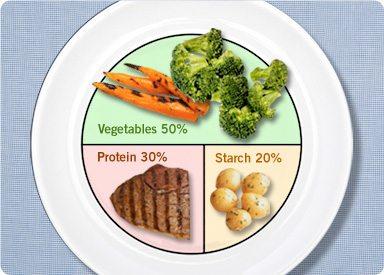In a world where counting calories often feels like the only way to manage our diets, finding a sustainable approach to portion control can seem daunting. Yet, mastering portion sizes without the need for meticulous calorie tracking is not only possible but can also be empowering. By understanding simple, intuitive strategies, you can enjoy your meals more and reduce the stress of constant calculations. This guide will walk you through effective techniques to manage your portions, helping you maintain a balanced diet and achieve your health goals with confidence and ease. Say goodbye to the numbers game and hello to a more mindful way of eating.
Master the Art of Mindful Eating
Incorporating mindful eating into your daily routine can transform your relationship with food, allowing you to enjoy meals without the stress of calorie counting. Start by paying close attention to your body’s hunger cues. Are you truly hungry, or are you reaching for food out of habit or emotion? By tuning into these signals, you can make more conscious decisions about when and what to eat.
Here are some practical tips to help you eat more mindfully:
- Slow Down: Take time to savor each bite. This not only enhances your dining experience but also gives your brain the chance to register fullness, helping you avoid overeating.
- Engage Your Senses: Notice the colors, textures, and flavors of your food. This heightened awareness can increase satisfaction, reducing the urge to overindulge.
- Practice Gratitude: Before starting your meal, take a moment to appreciate the effort and resources that went into preparing it. This simple practice can shift your focus to the present moment and enhance your overall enjoyment.
- Set a Peaceful Environment: Minimize distractions such as TV or smartphones during meals. A calm setting can promote mindfulness and help you connect with your body’s signals more effectively.
Harness the Power of Visual Cues
Visual cues are powerful tools that can effortlessly guide you toward better portion control. By simply adjusting your environment and the way you serve food, you can make healthier choices without the need for meticulous calorie counting. Here are some effective strategies to get you started:
- Plate Size: Opt for smaller plates. A full small plate can give the illusion of a larger meal, helping you feel satisfied with less.
- Color Contrast: Choose plate colors that contrast with your food. This makes it easier to recognize portion sizes, preventing over-serving.
- Pre-Portion Snacks: Instead of eating straight from the bag, divide snacks into single servings. This reduces the temptation to overindulge.
- Serving Utensils: Use smaller serving spoons or ladles to naturally serve less without feeling deprived.
Implementing these visual strategies can transform your eating habits by making portion control an effortless part of your daily routine. Remember, the goal is to create an environment that naturally guides you towards moderation and balance.

Optimize Meal Composition for Satisfaction
To achieve a sense of satisfaction with every meal, it’s essential to balance the composition of your plate. Start by focusing on the quality and variety of the foods you choose. Aim to include a mix of macronutrients and a spectrum of colors. This can be achieved through the following strategies:
- Prioritize Protein: Incorporate a source of lean protein such as chicken, fish, tofu, or legumes. Protein not only aids in muscle maintenance but also promotes a feeling of fullness.
- Fill with Fiber: Add a generous portion of vegetables or whole grains. These foods are rich in fiber, which helps slow digestion and maintain energy levels.
- Healthy Fats: Include a small amount of healthy fats like avocado, nuts, or olive oil. These fats are essential for nutrient absorption and can enhance the meal’s flavor profile.
By structuring your meals with these components, you ensure a satisfying and nourishing experience that naturally guides portion control without the need for calorie counting.

Leverage Smaller Plates for Effective Portion Control
Transform your dining experience with a simple yet effective strategy: using smaller plates. This subtle change can make a significant difference in how much you consume. By selecting dishes that are more modest in size, you can trick your mind into feeling satisfied with less food. It’s a clever psychological tactic that leverages the Delboeuf illusion, where the same portion appears more abundant on a smaller plate than on a larger one.
To implement this approach, consider the following tips:
- Swap out large dinner plates for salad plates or appetizer-sized dishes.
- Choose bowls with a smaller diameter for soups and cereals to prevent overfilling.
- Opt for smaller serving spoons to naturally reduce portion sizes.
By making these adjustments, you’ll naturally serve yourself less and still enjoy a satisfying meal without the need to count every calorie.
